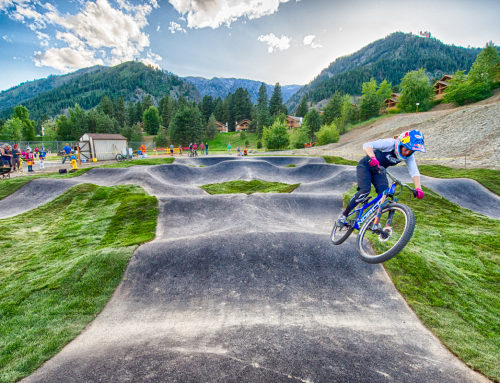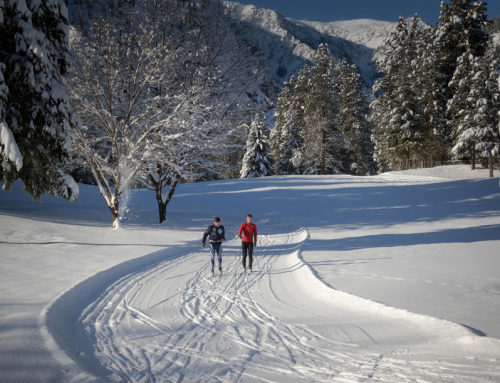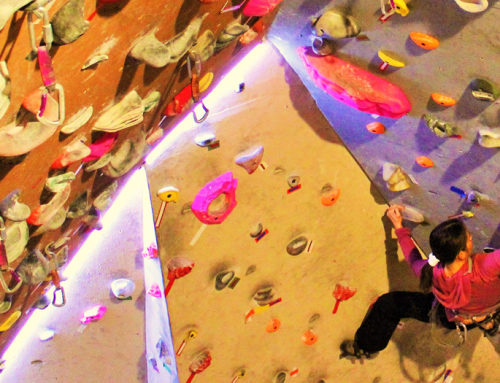Riding, history, science and murder! Read on… With my camper packed and mountain bike on rack, I headed out to shoot lasers across the Nevada desert. Yes really, lasers, but maybe not quite what you’re thinking. Miles down the road I began to muse about the peculiarity of my situation. After all, here I am traversing the west in what, for all intensive purposes, could be called a covered wagon, a pony and a revolver (my laser revolves -more on that later).
A nuance of western heritage. But with all the history that’s happened and all the science and technology achieved, it would seem western culture has come a long way since my great-great-granddad settled the west in 1846. Grandad was in one of the first wagon trains that toiled across various routes west. Story goes he road vanguard on a search party looking for land in California. Another member of his group had a green-broke horse and didn’t have a saddle cinch so naturally granddad lent him his (as he was on a well-mannered mule). Well, further down the trail his mule spooked, and with nothing to anchor his saddle on, he fell hard and died out there in the middle of the desert. As the story goes that is… As for me, I make the trip south across the west without a hitch.
So here I was, in the desert shooting laser rays. Sound strange? I’ll explain: this laser is designed to work like radar. It fires beams that are deflected by a mirror in a vertical line while the instrument revolves in a horizontal circle. Sensors record the reflections and the end result is a three-dimensional map of whatever gets shot; I’m using it to map old earthquake faults. Mapping the west in a new light you might say.
Hours turn into days, days into weeks. The desert heat is relentless. Constant beating waves of scorching fire with no shade as far as the eye can see. I found myself humming the old Marty Robbin’s tune “All day I face the barren waste, without the taste of water … cool, clear, water”. But in that song the cowboy had a horse named Dan. Where’s Dan I wonder? Then as I sat there among the rocky rubble while firing off a few billion shots with my stimulated emission 400,000-gigahertz radiation ray gun, a little past history emerged in the shape of an arrowhead discovered on the work site.
History younger than the 10,000-year-old faults I’m mapping, but older than the ’46 migration of western emigrants. This artifact is most likely from the Agai-Dicutta Band of the Northern Paiute Tribe. Maybe this point was used to chase off the early settlers? Most likely not tho since this was a peaceful group whose name means the Trout Eaters People. My guess is it was part of a child’s quiver used to hunt jackrabbits.
Days pass. As I worked late into the dusk on a final push to finish the project, a wild mustang approached me from the hills. With not a care in the world, he just walked right up. And rightfully so, this guy is totally adept to living here and is right at home. He must be Dan I surmise. It’s interesting that these mustangs do so well in the wild too I thought. The original wild horses in North America went extinct with the last ice age over 10,000 years ago. Dan’s family emigrated from Europe with the Spanish Conquistadors in the 1500’s. I suppose that makes him one of the very first western settlers.
So here’s this mustang, staring right at me. He gives a nod, turns, and then nonchalantly meanders away. Maybe my water-starved, heat-addled mind is getting to me. But I feel the history of this place trickle across the ground like water -cool, clear, water… So naturally I decided to delve a bit deeper.
I took a couple iPhone shots of a “detailed” Nevada map, left my party and turned off the pavement. Three hours up an 1850’s wagon trail and I’m worried. Creek crossings are steep, rocks are sharp, the track is cantered towards numerous cliffs, and washed out in many places. I can’t imagine driving a mule team wagon up this trail.
I did finally make it, and at over 10,000 feet elevation, I finally got out of the heat and found what might be the best campsite in the world!
With an aspen grove on one side and a whole mess of ignimbrite boulders on the other, I completed the circle around this meadow with my wagon. Ignimbrite is formed from a hot, very fast moving rush of burning ash from a huge volcanic eruption. It’s comprised of shards of welded crystals that somewhat resemble the composition of granite. Very edgy rock, so I bouldered around for a few hours before unhitching my bike to ride down into town for supplies.
Everyone was gone. The instant boom of the gold rush brought folks here as quickly as it left them high and dry. Story goes that a winter blizzard killed the founding prospector in 1859. In his first year here too -talk about losing a winning lottery ticket! Over the life of this town it swelled to over 8,000 residence and produced up to $34 million in gold. Consequently it also became as reckless as those better-known western towns of Tombstone, Deadwood and Dodge City. I purposely leave it nameless.
A town history complete with stagecoach hold-ups, saloon brawls, and shoot-outs. Stories abound; like the claim-holder, J.S. Phillips, who made a very profitable find only to be found crushed at the bottom of his mineshaft. A slip? Or treachery? I say: murder! As it does, time goes on, and the gold ran out. The people left and the mayhem with them. Only markers left of an existence long gone.
Riding through town was like going back in time. Totally immersed in the experience, I lingered until sunset then rode back to camp in the dark.
Turning north towards home, I explored more roots along another old route: The Applegate Trail. Led by none other than the mountain man Kit Carson, John Charles Frémont mapped this passage in 1843. The same Frémont who a few years later needlessly killed four prominent Californians of Mexican citizenship in a display of bravado making the ill-fated statement “I have got no room for prisoners”. Let’s just say his mapping feats were the plus side of his character. At this time California still belonged to Mexico and Oregon to Great Britain. But all of that is history of course…
This bleak route provided an alternative to the treacherous Columbia River portion of the Oregon Trail that was blazed a generation before by those other two mappers, Clark and Lewis. Not without its own perils, however, as part of it required crossing the largest dried up lakebed in North America. This sea of mud is thousands of feet deep and flat as a pancake on top. Crossing this pure desolation back-in-the-day with no water or feed for your horses and stock while pulling skinny, metal-strapped, wooden wheeled wagons must’ve been a real challenge. Hard to imagine.
What I also would have never imagined was how well fat, knobby, rubber-wrapped aluminum wheels would work on this surface. You wouldn’t believe it. Probably the best cornering traction ever! No berm required.
200 miles of very rough dirt roads later I finally made it back to pavement. Completely caked in dust, my truck was creaking, squeaking, squawking, rattling and more. I was kinda surprised I made it actually. Further up the trail I found myself here:
I know this place. Well over a decade ago I spent 6 weeks mapping the geology of this area. There are many things to learn from the different strata here but one layer is particularly interesting –the Mascall Formation. Similar to the genesis of the ignimbrites discussed earlier, this formation is a 10 to 15 million-year-old deposit of successive violent volcanic ash flows that filled canyon bottoms and spread across ancient valleys burying everything in its wake. Consequently, many ancient species were smothered and preserved in this rock unit. And it just so happens that these events captured the final evolutionary stages of the species Equus (i.e. Horse). All that time ago, grassland like conditions in western North America favored the trend towards fast moving grazers. The overall body changes being increase in size, decreasing toes (started with 3), and the development of complex teeth that can grind grass.
This snapshot actually starts in deposits just below the Mascall Fm. with the 35 million-year-old Mesohippus. The conditions changed so drastically during the last major ice age such that even after 35 million of years of selection and development, the horse (Equus lambei) was eradicated from North America. Extinction, the death of a species. But another horse, Equus caballus saved its hide by escaping to Eurasia years before this time. Only after thousands of years did conditions across western North America again become favorable for the horse. All that while Equus caballus was forming a relationship with Homo sapiens in Europe and Asia. And it’s this history that eventually enabled horses to come full-circle and resettle the place of their birth.
As I ponder these histories on the last leg home from riding the range on my T275C Intense Cycles “pony” and mapping the west with my VZ-400 Laser “revolver” while in my 2500 Dodge Ram “covered wagon”, I notice the Oregon Scenic Byways sign that reads: Journey Thru Time and realize that, yes, we have indeed come a long way since the early western settlers. But like the mustang Dan who crossed continents and oceans of time only to return home after thousands of years, I realize that I too am simply back to where we started. Which consequently, is also right where I belong.






















